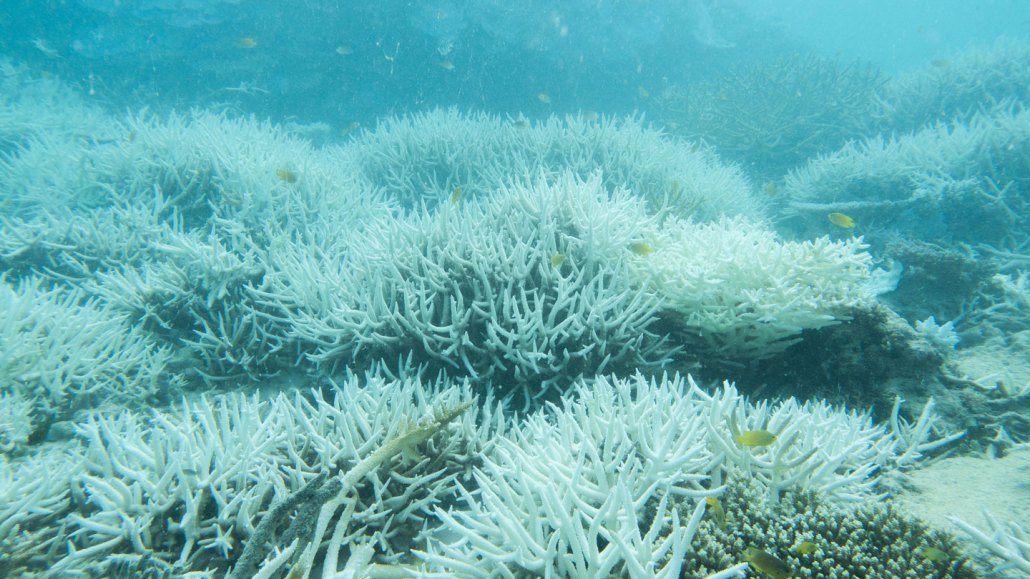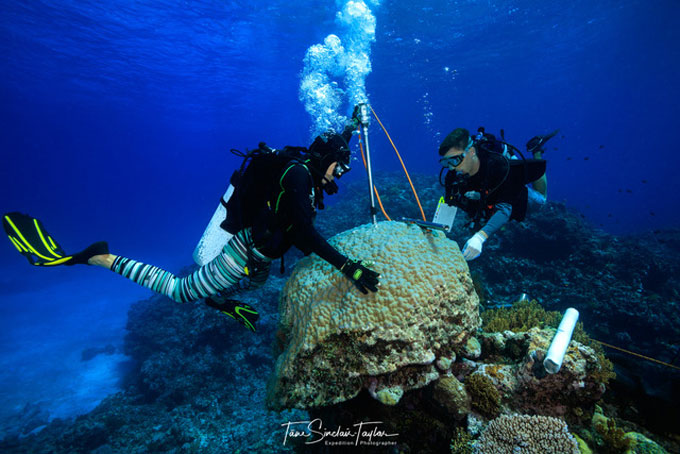Record-breaking Coral Sea temperatures threaten the Great Barrier Reef
Coral analyses show the region is sweltering under the highest ocean heat in four centuries

Blistering Coral Sea temperatures from February to April 2024 led to the Great Barrier Reef’s fifth mass bleaching event in eight years, turning patches of staghorn (shown) and other coral species stark white.
Ove Hoegh-Guldberg







